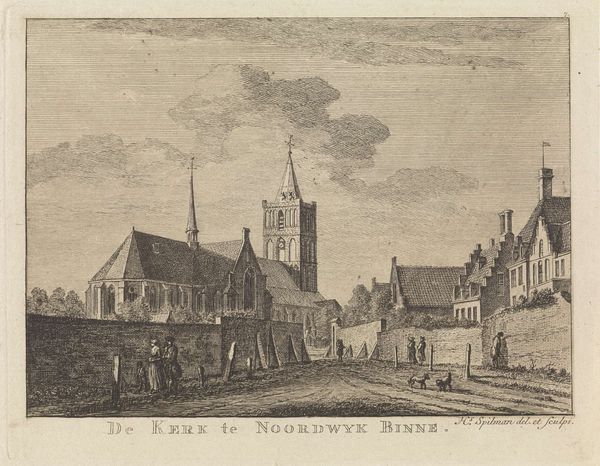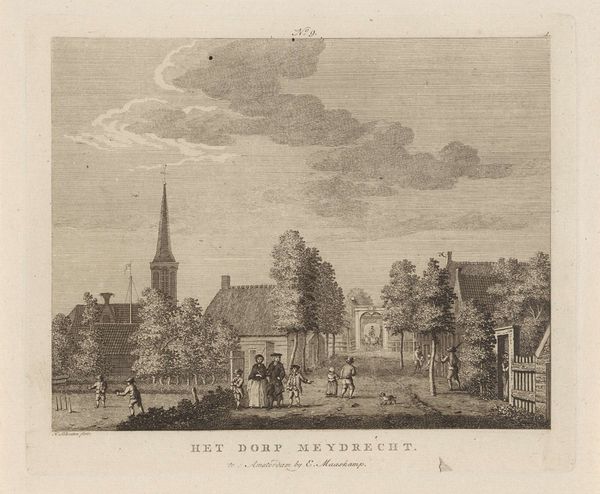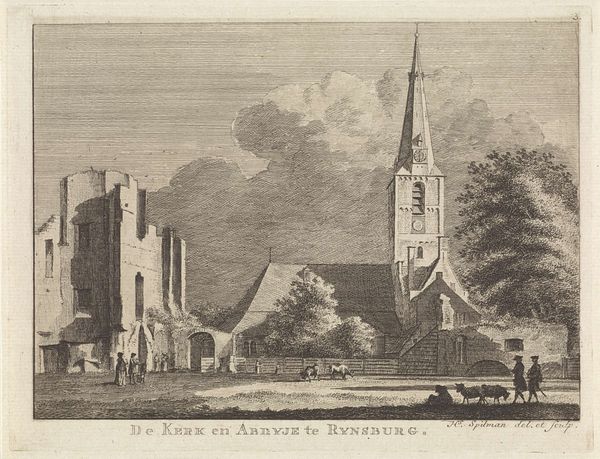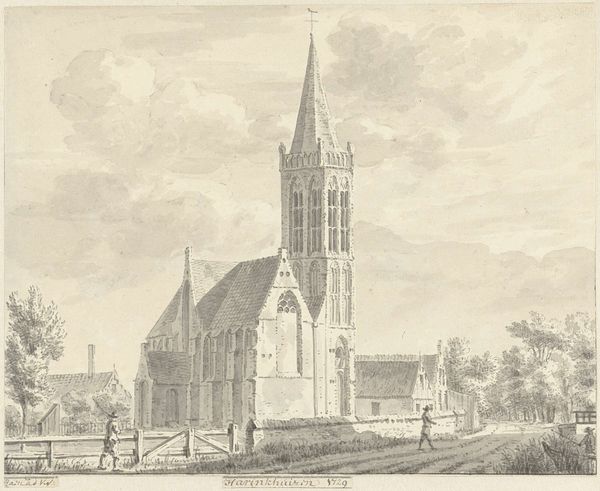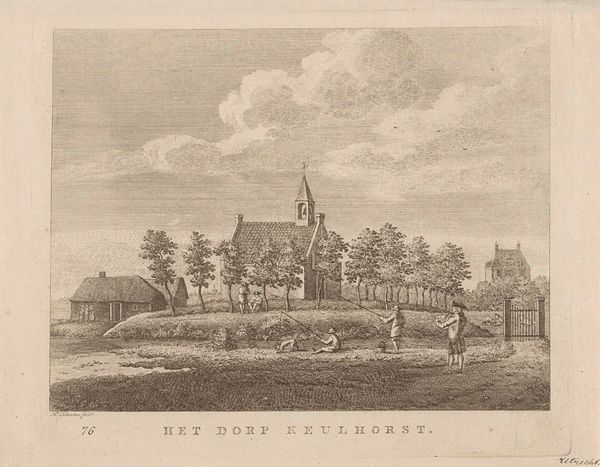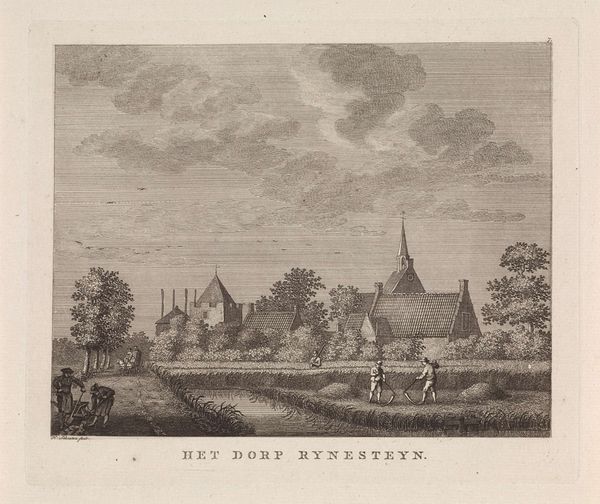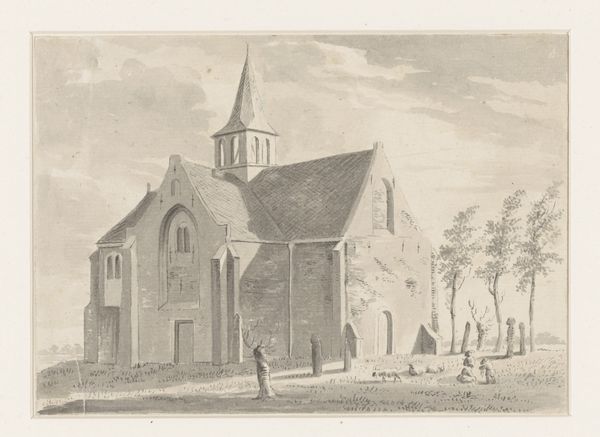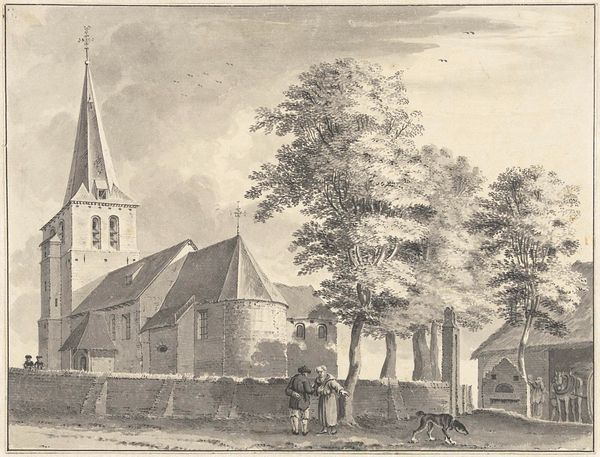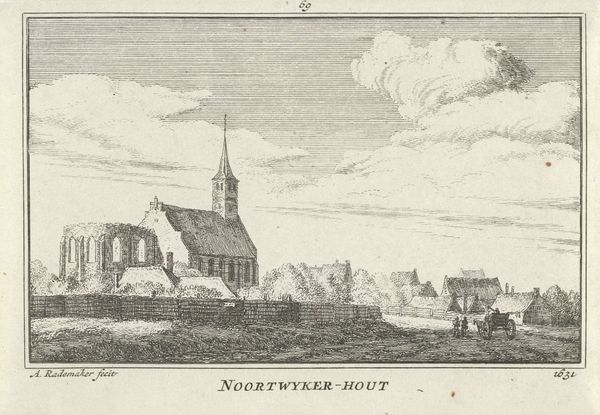
print, etching, engraving
#
dutch-golden-age
# print
#
etching
#
old engraving style
#
landscape
#
cityscape
#
engraving
Dimensions: height 160 mm, width 210 mm
Copyright: Rijks Museum: Open Domain
Hendrik Spilman made this print of Noordwijkerhout in the 18th century using etching and engraving, two intaglio techniques. The process begins with a metal plate, usually copper or zinc. For etching, the plate is coated with a waxy, acid-resistant ground. The artist then draws through this ground with a needle, exposing the metal. When acid is applied, it bites into the exposed lines, creating grooves. Engraving, by contrast, involves using a tool called a burin to directly cut lines into the metal. Spilman likely employed both techniques to achieve the varied textures we see here. Etching allows for softer, more spontaneous lines, evident in the sky and foliage. Engraving, with its precision, defines the architecture and figures. After the plate is prepared, it’s inked, and the surface wiped clean, leaving ink only in the etched or engraved lines. Damp paper is then pressed against the plate, transferring the image. Prints like these were relatively inexpensive, and met a growing demand for topographical views during this period of increasing trade and travel. They remind us that art is always entangled with broader economic and social forces.
Comments
No comments
Be the first to comment and join the conversation on the ultimate creative platform.
